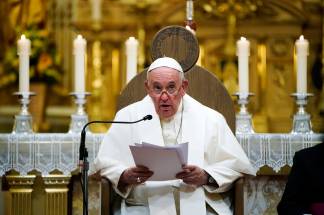Debt alert: Manitoba’s economy headed for trouble, report says
Read this article for free:
or
Already have an account? Log in here »
To continue reading, please subscribe:
Monthly Digital Subscription
$0 for the first 4 weeks*
- Enjoy unlimited reading on winnipegfreepress.com
- Read the E-Edition, our digital replica newspaper
- Access News Break, our award-winning app
- Play interactive puzzles
*No charge for 4 weeks then price increases to the regular rate of $19.00 plus GST every four weeks. Offer available to new and qualified returning subscribers only. Cancel any time.
Monthly Digital Subscription
$4.75/week*
- Enjoy unlimited reading on winnipegfreepress.com
- Read the E-Edition, our digital replica newspaper
- Access News Break, our award-winning app
- Play interactive puzzles
*Billed as $19 plus GST every four weeks. Cancel any time.
To continue reading, please subscribe:
Add Free Press access to your Brandon Sun subscription for only an additional
$1 for the first 4 weeks*
*Your next subscription payment will increase by $1.00 and you will be charged $16.99 plus GST for four weeks. After four weeks, your payment will increase to $23.99 plus GST every four weeks.
Read unlimited articles for free today:
or
Already have an account? Log in here »
Hey there, time traveller!
This article was published 29/07/2022 (1229 days ago), so information in it may no longer be current.
Manitoba’s long-term fiscal picture isn’t pretty.
The parliamentary budget officer says current fiscal policy in Manitoba — which has the highest ratio of debt to GDP in Canada — is not sustainable.
The non-partisan office estimates Manitoba’s 40.6 per cent debt-to-GDP ratio reported in 2021 could increase to 79 per cent in 2046, 157 per cent in 2071 and 270 per cent in 2096.
Debt-to-GDP ratios above 77 per cent can hinder economic growth and potentially put a government at risk of defaulting on its debts, economists suggest.
The 42-page “Fiscal Sustainability Report 2022” looks at current fiscal policy to see if changes are needed to avoid unsustainable government debt accumulation and to estimate the magnitude of any changes.
Fiscal sustainability report 2022
It looked at federal and provincial budgets from spring 2022 and found the long-term fiscal policies of federal and several provincial governments are sustainable, such as Alberta’s which is benefiting from higher oil prices. That’s not the case for Manitoba, Ontario, P.E.I. and B.C., “to a modest extent,” it said.
“We estimate that permanent tax increases or spending reductions amounting to 0.1 per cent of GDP would be required to stabilize the consolidated (provincial and territorial) government net debt-to-GDP ratio at 25.4 per cent of GDP at the end of our projection horizon in 2096.”
All provinces are faced with an aging population and an increasing share of people moving out of the workforce and into retirement, resulting in slower economic growth, the report says.
Slower economic growth will put downward pressure on government revenues as growth in the tax base slows. At the same time, aging of the population will put upward pressure on government programs such as health care, Old Age Security and pension benefits, it said.
Altogether, the provinces’ combined own-source revenues, combined with federal transfers, are sufficient to keep the net debt-to-GDP ratio below its 2021 level over most of the 75-year projection horizon, it said.
On its own, Manitoba’s long-term debt projections at this point are in the same ballpark as Venezuela and Japan — which are struggling with debt.
“This report’s a warning.” – NDP finance critic Mark Wasyliw
Japan has the world’s highest debt-to-GDP ratio (236 per cent), followed by Venezuela (232 per cent), according to World Population Review. The U.S. ranked 13th (108 per cent). It has the world’s highest GDP but still spends more than it earns. Canada ranks 28th (87 per cent).
A Manitoba government spokesman on Friday stressed the PBO report isn’t a forecast, and there are several factors that weigh in Manitoba’s favour; including a faster-growing population and higher labour productivity growth compared to other provinces, on average.
“This also means that Manitoba’s GDP is projected to grow faster than the national average, which results in a reduction in federal transfers as a share of Manitoba’s economy over the long term, including health care transfers.”
The PBO report shows the federal government has the fiscal capacity to increase its share of health care expenses — “something that Premier Heather Stefanson and other provincial leaders have raised repeatedly with the Liberal government.”
From when it first came to power in Manitoba in 2016, promising to slay a ballooning deficit, and until the pandemic, the Progressive Conservative government slowed the growth of the provincial debt. The debt-to-GDP ratio fell 3.6 per cent per year from 10.9 per cent in the years prior to the PCs taking office, the 2022 provincial budget says.
The latest assessment of Manitoba’s long-term debt projections, however, is a “warning” and signs of “the chickens coming home to roost,” critics on both ends of the political spectrum say.
“The chickens are coming home to roost.” – Prof. Gregory Mason
“This report’s a warning,” said NDP finance critic Mark Wasyliw. He accused the PCs of being “completely reckless” with Manitoba’s finances. The Tories added to the province’s debt to issue education property tax rebate cheques to out-of-province billionaires and Toronto-based corporations, said Wasyliw.
“That doesn’t help our economy. It doesn’t build jobs here. It doesn’t grow anything. And we don’t get any tax revenues (generated) from that tax cut when that taxpayer money goes elsewhere,” said the member for Fort Garry.
University of Manitoba economics Prof. Gregory Mason also opposed the province taking on more debt to send out education property tax rebates, calling it “unwise.”
Manitoba’s long-term debt projections, Mason said, are no surprise.
“The chickens are coming home to roost,” said the professor who has a fiscally conservative bent. The metric he’s watching most closely is the GDP, and if it can sustain tax revenues.
If it can’t, “the choices are simple,” Mason said: “float more debt, which will cost us more than during the pandemic, cut spending, (he raised the possibility of cancelling participation in the national child care program) or raise taxes.”
“Our economy has slowed down under the PCs and they don’t have a plan to create jobs in Manitoba.” – Mark Wasyliw
While a low debt-to-GDP ratio is considered preferable, it’s no guarantee of a healthy economy. Many stagnant or developing economies have a low debt-to-income ratio because both their level of debt and their GDP are low. Afghanistan, for instance, had a debt-to-GDP ratio of 7.8 per cent in 2020.
The NDP says investing in education and health care is the answer.
“Our economy has slowed down under the PCs and they don’t have a plan to create jobs in Manitoba,” said Wasyliw. The province’s increase of university tuition fees on top of a five-week strike last year by faculty at Manitoba’s largest university hurts Manitoba’s economy, he said.
“We’re now seeing international students bypassing Manitoba. They used to come here in droves. That was a huge driver of the economy, a huge area that we grew, but we’re also seeing professors leave Manitoba now with cutting-edge grants,” Wasyliw said. “We’re not researching anymore in Manitoba, we’re not developing new technology. All that creates jobs, all that creates wealth, all that creates taxes, which means that our debt problem is less because our economy is growing,” Wasyliw.
“We think if we put the effort in, now we can turn this around and make sure this isn’t a problem in the future.”
carol.sanders@freepress.mb.ca

Our newsroom depends on a growing audience of readers to power our journalism. If you are not a paid reader, please consider becoming a subscriber.
Our newsroom depends on its audience of readers to power our journalism. Thank you for your support.








